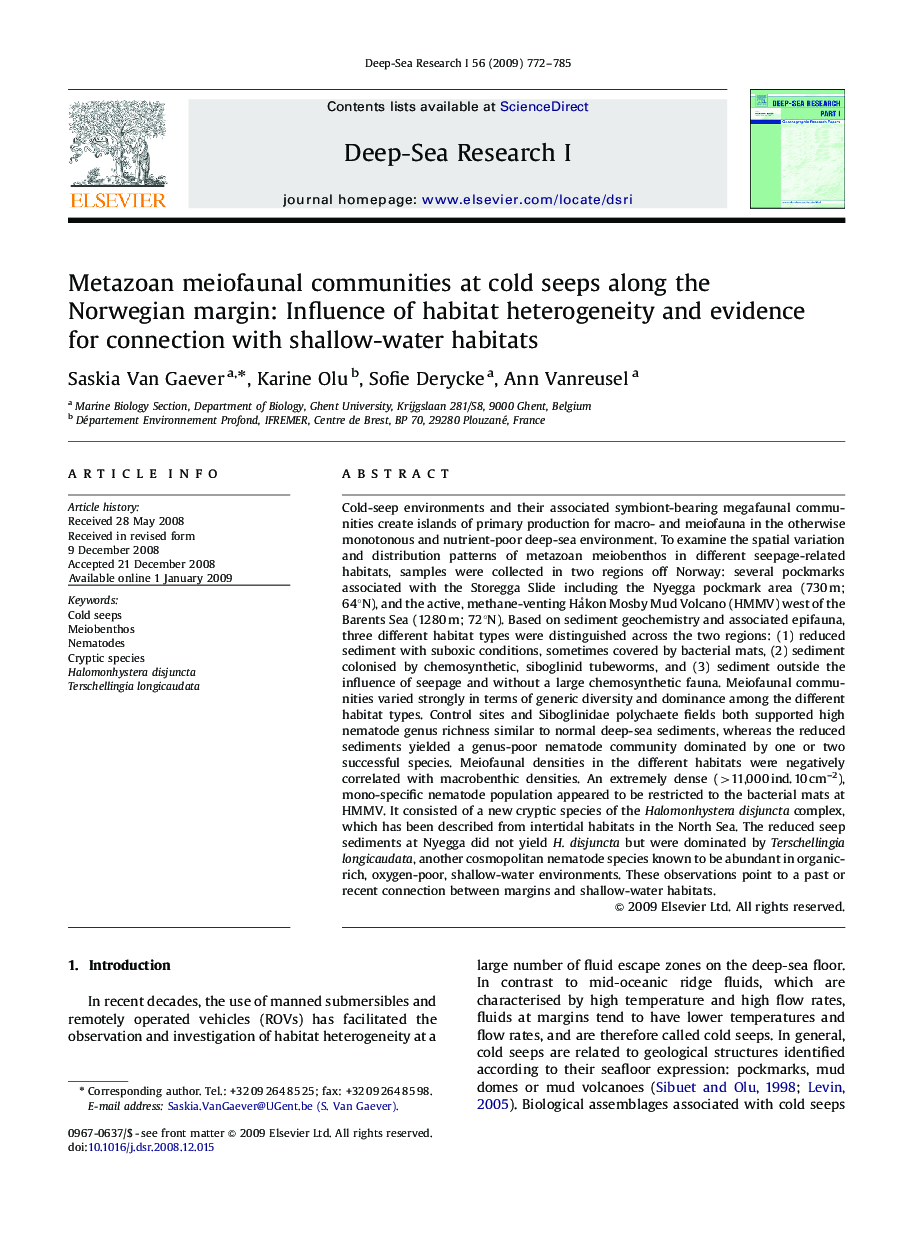| کد مقاله | کد نشریه | سال انتشار | مقاله انگلیسی | نسخه تمام متن |
|---|---|---|---|---|
| 4535040 | 1326079 | 2009 | 14 صفحه PDF | دانلود رایگان |

Cold-seep environments and their associated symbiont-bearing megafaunal communities create islands of primary production for macro- and meiofauna in the otherwise monotonous and nutrient-poor deep-sea environment. To examine the spatial variation and distribution patterns of metazoan meiobenthos in different seepage-related habitats, samples were collected in two regions off Norway: several pockmarks associated with the Storegga Slide including the Nyegga pockmark area (730 m; 64°N), and the active, methane-venting Håkon Mosby Mud Volcano (HMMV) west of the Barents Sea (1280 m; 72°N). Based on sediment geochemistry and associated epifauna, three different habitat types were distinguished across the two regions: (1) reduced sediment with suboxic conditions, sometimes covered by bacterial mats, (2) sediment colonised by chemosynthetic, siboglinid tubeworms, and (3) sediment outside the influence of seepage and without a large chemosynthetic fauna. Meiofaunal communities varied strongly in terms of generic diversity and dominance among the different habitat types. Control sites and Siboglinidae polychaete fields both supported high nematode genus richness similar to normal deep-sea sediments, whereas the reduced sediments yielded a genus-poor nematode community dominated by one or two successful species. Meiofaunal densities in the different habitats were negatively correlated with macrobenthic densities. An extremely dense (>11,000 ind. 10 cm–2), mono-specific nematode population appeared to be restricted to the bacterial mats at HMMV. It consisted of a new cryptic species of the Halomonhystera disjuncta complex, which has been described from intertidal habitats in the North Sea. The reduced seep sediments at Nyegga did not yield H. disjuncta but were dominated by Terschellingia longicaudata, another cosmopolitan nematode species known to be abundant in organic-rich, oxygen-poor, shallow-water environments. These observations point to a past or recent connection between margins and shallow-water habitats.
Journal: Deep Sea Research Part I: Oceanographic Research Papers - Volume 56, Issue 5, May 2009, Pages 772–785